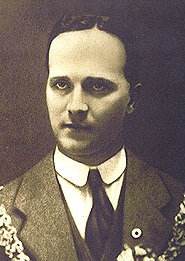5 October 2017
By Bryan Smyth
bryan@TheCork.ie

Cork City Council and Cork City and County Archives are delighted to announce the online publication of the first register of burials for St. Finbarr’s Municipal Cemetery, Glasheen Road, Cork City, dating from 25 February 1868 to 12 June 1896.
Digitised with support from the Cork City Creative Ireland Programme and Cork City Council, the register is available in searchable format on www.corkarchives.ie . It contains a wealth of genealogical and historical information concerning those buried, both Roman Catholic and Protestant, since the cemetery opened in 1868.
The online availability of the register is major boon for those researching their Cork ancestry. Not only does the register record where 5,875 people are buried at St. Finbarr’s Cemetery, it also records the deceased’s religion, occupation, place of birth, last place of residence, and marital status.
Cork Genealogical Society Chairman, Ed Wallace said: “Many locals and overseas visitors researching their forebears will be extremely happy with this new free online database available at the archive web site. People always visit cemeteries when they find where their ancestors are buried and as St. Finbarr’s is big, this will make it easier to find family graves. With more records becoming available a lot of research can now be done in Cork”.
Named after the 6th century Bishop and patron saint of the city and the diocese of Cork, St. Finbarr’s Cemetery is the city’s largest and one of its oldest cemeteries.

Tomas Mac Curtain
It also contains one of the largest republican gravesites for those associated with Ireland’s War of Independence. Tom Barry, Tomás MacCurtain and Terence MacSwiney are buried at St Finbarr’s. Also buried at St. Finbarr’s Cemetery are Taoiseach Jack Lynch; sculptor Seamus Murphy, and Cork’s first Lord Mayor, Sir Daniel Hegarty.

